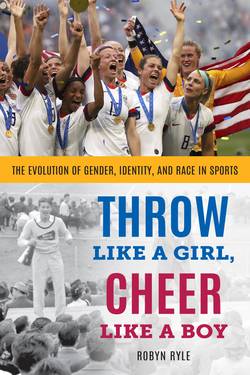Читать книгу Throw Like a Girl, Cheer Like a Boy - Robyn Ryle - Страница 19
На сайте Литреса книга снята с продажи.
Women Applaud and Men Compete
ОглавлениеFor the first century of its existence as a modern sporting event, the Olympic Games had no women athletes. Pierre de Coubertin, who restarted the Games in 1896, believed that the Olympics should be focused solely on “male athleticism . . . with the applause of women as a reward.”[4] But even before the modern era of Olympic competition, there’s evidence of women being barred from any form of sports participation. According to Pausanias’s second-century Description of Greece, a woman named Calipateira passed herself off as a male trainer in order to accompany her son to a gymnastic competition. When she was found out, she escaped the death sentence usually imposed for women who sneaked into the games. But in response to her intrusion, a law was passed stipulating that future trainers had to strip before they entered the arena and thus, the history of gender testing in the Olympics began.[5]
It’s not surprising that women didn’t compete in the modern Olympic Games until the beginning of the twentieth century. Sports have long been defined as the domain of men (and more specifically, the domain of the white, cis, straight man), a place where the ideal of masculinity can be both created and reinforced. Like many of his time, Coubertin, the father of the modern Games, believed that real women were incapable of participating in sports. The rigor and competition were too much for the fairer sex. This idea, that real woman cannot compete in sports, is one of the core assumptions that underlies the history of gender testing in sports. Women who can compete—and who excel—must not be real women, because real women are not athletes.[6]
